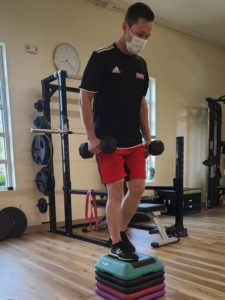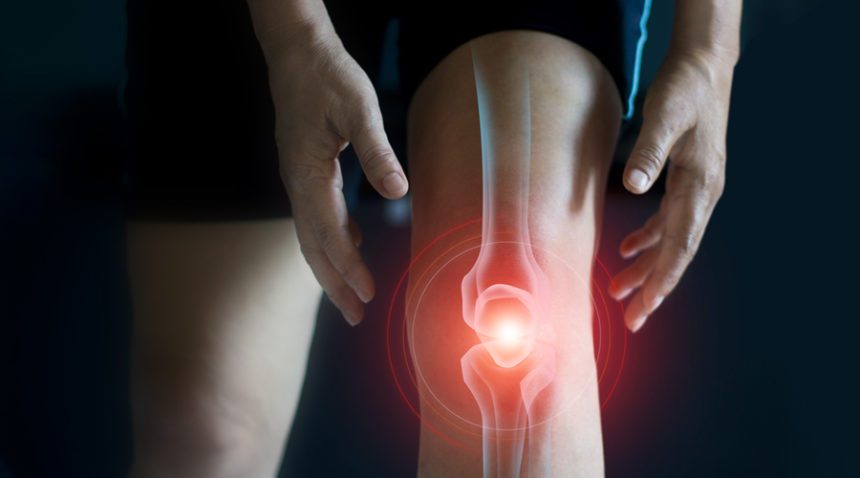You’ve heard of a smart phone and a smart home. But what about a smart knee? Yes, that’s a thing, too.
Orthopedic surgeons are now performing knee replacement surgery with a “smart” implant that collects and transmits data such as steps taken, walking speed, range of motion and other indicators of how well a knee functions after surgery. Surgeons are then able to use this information to monitor a patient’s recovery and create a tailored rehabilitation plan.
Known as the Persona IQ, the smart knee contains a tiny sensor on the inside of the knee replacement that records real-time information about the patient’s movement. The sensor transmits this information through a HIPAA-compliant cloud-based software that can be reviewed by the patient and their care team.
The Persona IQ begins to collect data in the hours after surgery and sends it to the patient’s
orthopedic surgeon. (Not to worry: It is not a GPS tracker that collects data on a patient’s location).
“It provides information about their stride length, their step cadence, their gate speed, the number of steps they’re doing on a daily basis, and their functional range of motion with walking,” says Tyler Steven Watters, MD, an orthopedic surgeon who performs surgery at UNC Health Rex. “It allows the patient to take a more active personalized role in their rehabilitation and track their progress with real data.”
Sidelined from Soccer with Knee Pain

In May, Brent Niemann, 48, became one of the first in Raleigh to have the smart knee replacement surgery.
Niemann, a civil engineer, has always been active. He played soccer growing up and during college, but he was playing basketball when he tore the ACL in his right knee in 1996. The next four years included ACL reconstruction surgery, another tear in the same knee and a second surgery—this time reconstruction and microfracture, a procedure to prompt the knee to grow new cartilage.
He took a break from soccer and focused on work. He married his wife, Holly, and they had two children. In 2008, he joined an adult soccer league. In 2012, he tore his left ACL and had yet another surgery. That was the end for Niemann and soccer.
“I waited about 18 months, and then I tried to go back,” he says. “But it was too much pain.”
Knowing he had to find a lower-impact sport, Niemann traded his cleats for a bike helmet and began mountain biking. His knees mostly cooperated for about 10 years, and then last year, he started to notice swelling in his right knee.
“It would happen at random times, when I wasn’t doing any activity. I’d wake up in the morning and it was swollen, and I had discomfort when I was riding,” he says.
A High-Tech Option for a New Knee
One day in January, Niemann was standing, talking to his boss, when he twisted slightly and his right knee “gave out”—it locked, swelled up and left him in excruciating pain. His doctor told him that the cartilage that cushioned his knee joint, allowing it to move, was gone.
“He said, ‘You don’t have anything left there. You’re bone-on-bone all the way across,’” Niemann says.
Niemann’s doctor drained his knee of fluid, gave him a cortisone shot and later tried hyaluronic acid injections to help lubricate the joint and prevent friction and rubbing in the area. Unfortunately, his pain persisted.

“My option was to be fitted for a knee brace that I would have to always wear or have the knee surgery,” Niemann says. “My wife and I talked about it, and we decided I was too young not to do it.”
Although he did not know much about the smart knee when he decided to have knee surgery, Niemann says he found the idea of having more information about his recovery appealing.
The data from the smart knee sensor is valuable for the surgeon and patient to set goals and measure progress on an individual basis, Dr. Watters says.
“Some people at six weeks are walking 3 miles a day, and some people at six weeks are still only walking a half-mile a day,” he says. “But this allows the patient to get a sense of how their recovery is going, the trajectory they’re on, and to follow that with real, actual data, not just some sort of subjective estimation about how they’re doing.”
Recovering After Knee Replacement
Eight weeks after his surgery, Niemann was already up to 5 miles on the elliptical. His care team and physical therapists were thrilled with his progress.
Now, he’s walking his dogs again and is back to mountain biking, without pain.
“It feels awesome,” says Niemann, who is working to improve his conditioning so his lungs can keep up with his new knee. He mountain bikes with a group of friends of all ages, and the competitive spirit he brought to the soccer field is still there. “I’m trying to keep up with the guys 15 years younger than me.”
Have pain in your knees? Talk to your doctor or find one near you.

